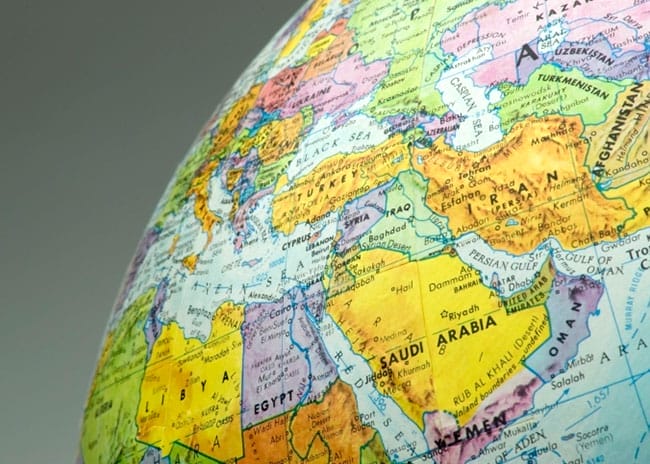The 2015 World Economic Forum Global Risks Report published in January this year marked the 10th anniversary of the WEF’s effort to assess global risks around the world, determine their interdependencies and shed light on good practices to better handle them. Over time it has become an important risk barometer.
Water crises, profound social instability, interstate conflicts and structural high unemployment topped the ranking of the risks the MENA region (Middle East and North Africa) is the most ill-prepared for, according to respondents to the Global Risks Perception Survey from the region. In recent years the region has indeed been hit by a series of diverse significant shocks, from the Arab Spring which has left several MENA countries in a fragile social situation, to terrorist attacks, from financial crises, to draughts and other natural disasters.
There is a need for a significant improvement of local risk management capability. The challenge for MENA leaders is to make sure they don’t limit their response to merely reacting to an event that has just happened. Additionally, leadership needs to move beyond the silo approach that currently prevails, that of focusing on one risk at a time and ignoring connections between risks that reinforce each other. We see this silo approach when entities within a government are in charge of only one aspect—medical doctors look at health issues, engineers look at construction, economists look at finance, lawyers focus on legal issues, etc. Leaders must learn to prioritize all the risks in the landscape and develop solutions that can benefit from economies of scale by reducing exposure and improving preparedness across different categories of risks.
What risk management requires in the 21st century though is a much more proactive and holistic approach. This is a requirement for anyone who wants to measurably improve resilience.
The word “resilience” itself has become somewhat of a buzzword these days. At its core is a simple and rather intuitive notion: the capacity of a country, city or organization to bounce back after a shock. Hundreds of glossy reports proposing concepts and resilience frameworks have been written. They can certainly help MENA leaders appreciate the resilience concept. But way too often, that is where the discussion, mainly semantic, starts and stops.
My experience in the region tells me that what the heads and rulers of MENA states and emirates need are very concrete tools that can help them make more informed decisions to better foresee and measurably reduce the aforementioned risks before they materialize and quickly recover when they do.
Concrete resilience initiatives in neighboring countries with shared values constitute important benchmarks that can be replicated, and even improved, across the region. Several of those have been launched in the past two years that are very exciting. I discuss three in turn.
1. The establishment of the premier national resilience fund in the MENA region.
Led by the ministry of interior of the Kingdom of Morocco, in close collaboration with other ministries and the World Bank as part of a larger integrated risk management strategy, this new Moroccan Resilience Fund (FLCN), which I was privileged to being asked to design, is now selecting investment projects that will reduce exposure of populations and assets.
The initial call for proposals was in February, offering governmental agencies and all municipalities around the country the possibility to apply for co-financing. The eligibility criteria and operation of the fund are transparent. With already more demand than the fund can support for this first call, the selection will be based on project quality. This is already considered as very encouraging here in Morocco where I am this week.
The fund is currently designed to finance $125 million over the next five years. With a leverage ratio of 3-to-1 (the fund co-finances up to a third of the total project cost to encourage multistakeholder partnerships and reduce operational risks) and the anticipated benefit-cost ratio of the selected investments, the expected benefit it should return will be higher: $1.5 billion, measurably boosting resilience.
Such a “resilience fund” idea, a term I coined in Davos several years ago, is now real and our design replicable in other countries.
2. The 100 Resilient Cities initiative supported by the Rockefeller Foundation.

The Historic Quarter of Byblos, one of three MENA cities selected in 2013 and 2014 for the 100 Resilient Cities initiative. Photo credit: Wikimedia Commons.
It provides 100 cities selected around the world over three annual waves with four key offerings: (i) at least two years of grant funding for a chief resilience officer; (ii) funding for a resilience strategy process; (iii) access to a funded, curated platform of tools to implement the city’s resilience initiatives; and (iv) a global network of cities. The chief resilience officer is an innovative position in city government that ideally reports to the city’s chief executive, and acts as the point person for resilience building and coordination—working transversally across city departments to develop holistic solutions. The hope is that this incubatory period will be sufficient for the city to sustain the position afterwards. Three MENA cities have already been selected in 2013 and 2014: Ashkelon (Israel), Byblos (Lebanon) and Ramallah (Palestine). Several others are competing for this year final phase, and what the selected cities do in the coming years will certainly be looked as benchmarks.
3. The recent emergence of high-caliber startups to provide countries in the MENA region with dedicated big data technology to enhance their resilience.
Smart Data Science, for instance, based in New York, is working with government leaders in Saudi Arabia to collaborate on an innovative digital platform of their risk and ongoing risk management activities. That firm was recently invited to present its technology at the World Bank IMF Spring Meetings in Washington, alongside industry giant Google.
With the right combination of financial solutions, governance technology, and knowledge, resilience can be more than a buzzword. It becomes reality. Several MENA countries are now on this road. The rest of the world is certainly watching.

























